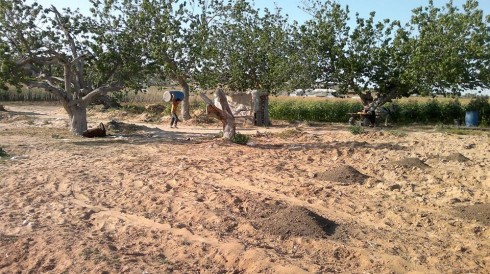Postcards From Gaza
Photo by Mohammad Arafat
By Mohammad Arafat
Gaza is a place of many scenes that would create many postcards with vivid images. It also is a place of many tragedies, mixed with many happy and even magical moments as well. Our tragedies are Shakespearian in depth—yes, there is torture and killing and bombs and being besieged. But even all those things can’t take the beauty from the place we live in.
Now when we’re talking politics, that’s almost always bad. But if I speak about the beauty of this place, that’s another matter. I flipped through the many pictures in my mind—the sad, the happy, the good and the bad. Finally I settled on that picture of this place which shows that the atmosphere of this Holy City is based on a beautiful simple life. I want to share the fabulously sweet side of Gaza.
So here goes. I’m not just telling one side at the expense of the other. Both are there. Gaza is 19 miles north of Egypt, the only link between Asia and Africa. In olden times, the traders talked about the profits that could be obtained in this city and the importance of the place. Gaza has a long golden shore along the glittering Mediterranean. Our seaport is called Mina’ Gaza and it is visited by tourists and visitors because of the many beautiful nearby places—such as the Al-Emary Al-kabeer Mosque in Sheja’eia lane, Barqouq castle in Khanyounis, Al-Basha castle museum in the middle of Gaza and of course the port itself to the west of Gaza. Despite the war and many clashes that interrupt lives and hurt children, life is relatively simple here. People live as if nothing is threatening them even if it is. They know they live with constant threats, so the fear of those threats is greatly diminished.
When Gaza’s wake up every dawn after hearing the call of the Al-Fajr prayer and ablution, they go to the mosque asking God to pour his mercy on them and their families and to provide livelihoods. The dawn’s also freshens the atmosphere in which the spirt of the morning prayers, spirits and minds mingle. The fresh breeze expels most of the sadness. The purity of the prayers then lightens the dark abandoned streets.
From the early morning hours, the pure white Gazan moon says good by and is replaced by the young orange sun, which hugs and shakes our hands as we begin the day’s endeavors. It provides the workers energy for the day and propels students off to study.
The sun lights up the nests of baby birds beginning a concert of twittering and chirping and emerging from under the light, sleek smooth bodies of their mothers, who must go off and look for worms and grains from the brown land under the long rows of olive, orange and lemon trees. The Gazan farmers wipe the sweat from their brows with the same tired hands that are wielding the rusty axes with which they plow their land, so humans and birds alike can feast.
The mother birds return and by late afternoon there is no more shade from the trees and the fading sun turns into a large fire ball, the same sun that when it rises push the fish in the sea happily to the fishermen waiting to catch them.
The fishermen begin their day with the name of God on their tongues, and well they should.
As the sun exhausts itself, it must prepare its luggage for the night’s travel. He watches the workers going home, the children waiting for their hugs and kisses. And then he waves his last rays and says, “See you tomorrow.” As twilight descends, the sky turns red as the tired sun goes away and the moon dances up into the sparkling stars. They do so in order for innocent Gazans to sleep and dream under the clear night sky.
When you read about the next catastrophe to strike us from the sky or ground, remember, this is the good, simple life in Gaza, we want unhindered.
Comments
Leave a Reply
You must be logged in to post a comment.




